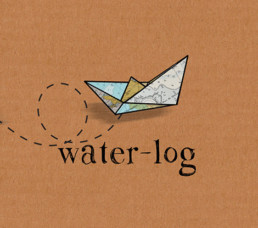So, for those of you who have not brushed up on your Caribbean island topography, Guadeloupe looks like a lopsided butterfly. Its western wing is called Basse Terre and is covered in mountains and volcanoes with clouds hovering at their summits; its eastern side is Grande Terre and is flatter, drier and older. In the middle is a narrow river, actually it’s more of a saltwater channel, bordered by mangroves which bisects the two. It is very shallow, only 6 and a half feet deep at points, has a huge reef at its northern end and is straddled by two bridges. These bridges open at 5 in the morning to any vessel that is ready and willing and just plain crazy enough to sail up the channel. Can you guess who that might include…?
We moved the boat from outside Point à Pitre to the southern end of the Rivière Salée, by the Pont de la Gabarre, and dropped our anchor in the afternoon, just as the sun was starting to dip. It’s a lovely spot, still and quiet save for my initial squawks about just how shallow it is. You see, I should point out at this point that James and I have not confirmed, as yet, what our exact draught is. This is the key measurement that you need from the water line to the bottom of your keel and enables you to know that you have enough water when you anchor. Now, since the famous running aground incident at Alvor in Portugal, we have always over estimated and offset our depth gauge so as to avoid any hairy situations. Our documentation on the boat states that it’s 1.72m but, so many of these statistics have proved to be inaccurate, so we were still somewhat unsure – hence the squawking.
But there is safety to be found in numbers and, to our great relief, two other boats joined us to anchor and lie in wait for the 5am bridge opening: one catamaran – well known for having hardly any keel whatsoever, and one monohull like us – a ketch which probably had a similar draught. When the time came and our little caravan of three started nudging towards the clanking bridge in the early hours, we positioned ourselves in the middle and slowly started joining the dots between the alternating port and starboard markers. The second bridge, the Bridge l’Alliance, opens half an hour later and you can anchor just after this one too. This allows you to take a little rest and have breakfast before continuing along the second half of the channel in good light as you travel between bridges in pitch black.
The shallowest points of the river are just before the southern bridge and at the northern end, where the channel pours out into the Grande cul-de-sac Marin, a 4 mile system of reefs. However, at both these points the bottom is made of soft mud so a quick manoeuvre rescues you from any grounding situation. The journey itself was beautiful and atmospheric: from the start in total darkness, using the buoys as our only guide; to the mangrove-lined morning with herons and butterflies as our company; spilling out into the eerie reef-world at the northern end, where miles of mill-pond still turquoise water borders the navigable route through. Spooky, calm and all without a soul around as our caravan companions had moved on after the northern bridge. So, although we planned on this route to shorten our sail to Antigua, the adventure that we got from the short cut was memorable to say the least.

